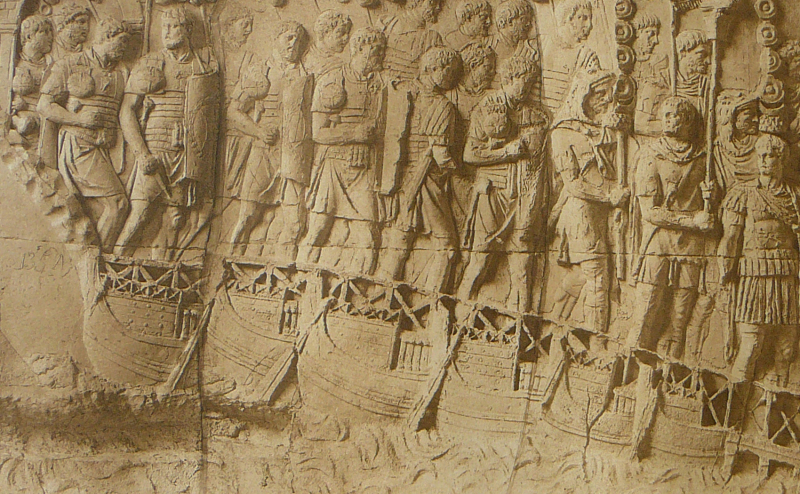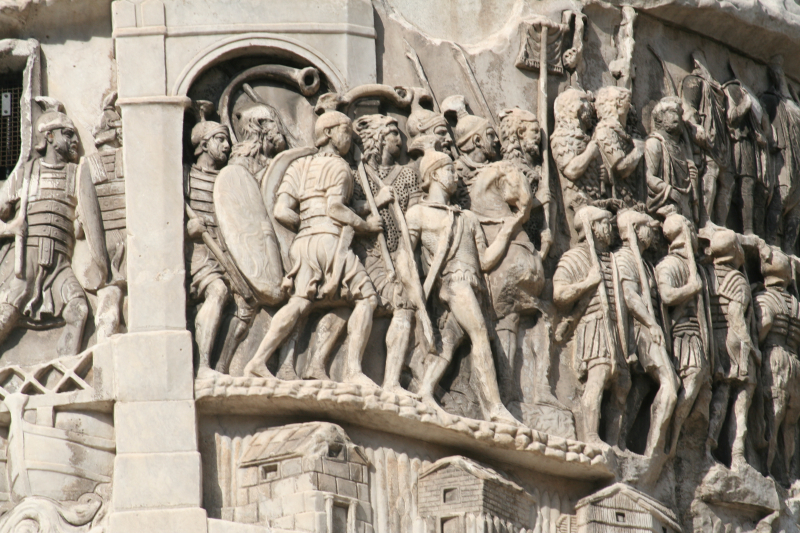Lorica segmentata

The lorica segmentata, also known as the lorica lamminata, is a sort of Roman army personal armor made of metal strips fashioned into circular bands and linked to internal leather straps. In popular culture, the lorica segmentata has become synonymous with the Roman legions. The temptation to depict Roman legionaries in this sort of armor often extends to periods in history that are too early or too late.
Legionaries wear the lorica segmentata and carry the curved rectangular shield. Based on this, it has been assumed that lorica segmentata was only employed by legionaries and praetorians. However, some historians believe Trajan's Column is historically wrong due to its erroneous and stylized depiction of Roman armor. The discovery of fragments of the lorica segmentata in regions where auxiliary troops would have been stationed suggests that the lorica segmentata was employed by auxiliary forces. However, it is also plausible that the existence of the lorica segmentata in these places was due to the presence of a limited number of legionaries stationed there. The lorica segmentata does not appear at all on the Adamclisi Tropaeum, and both legionaries and auxilia are represented wearing the lorica squamata.
Some analysts believe that the Adamclisi memorial depicts the incident more accurately. It may have been used infrequently, perhaps just during showpiece wars and parades. According to this opinion, the figures in Trajan's Column are extremely stereotypical in order to clearly distinguish between different classes of troops. It's also debatable whether the lorica segmentata was only utilized in the western world. Every archaeological discovery of such armor has occurred in the western Roman Empire, but never in the east.











